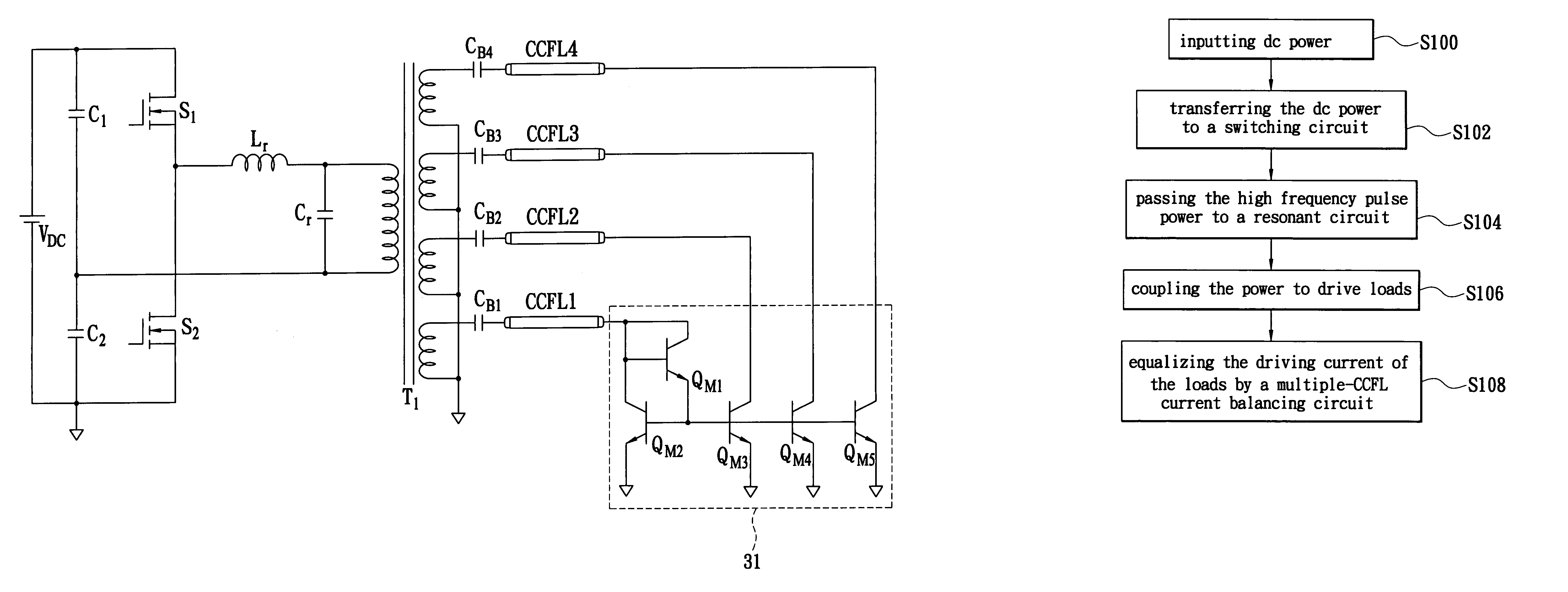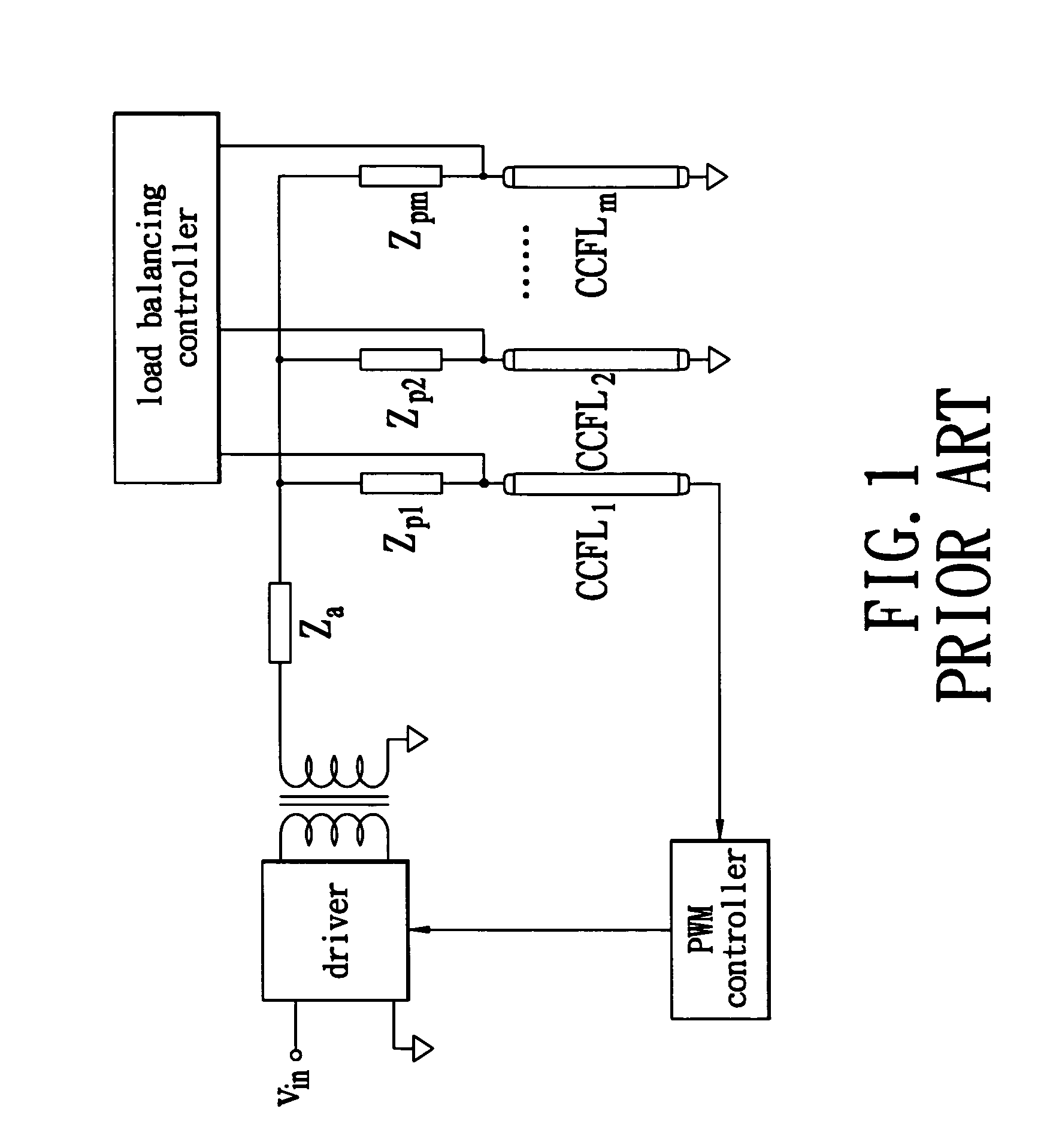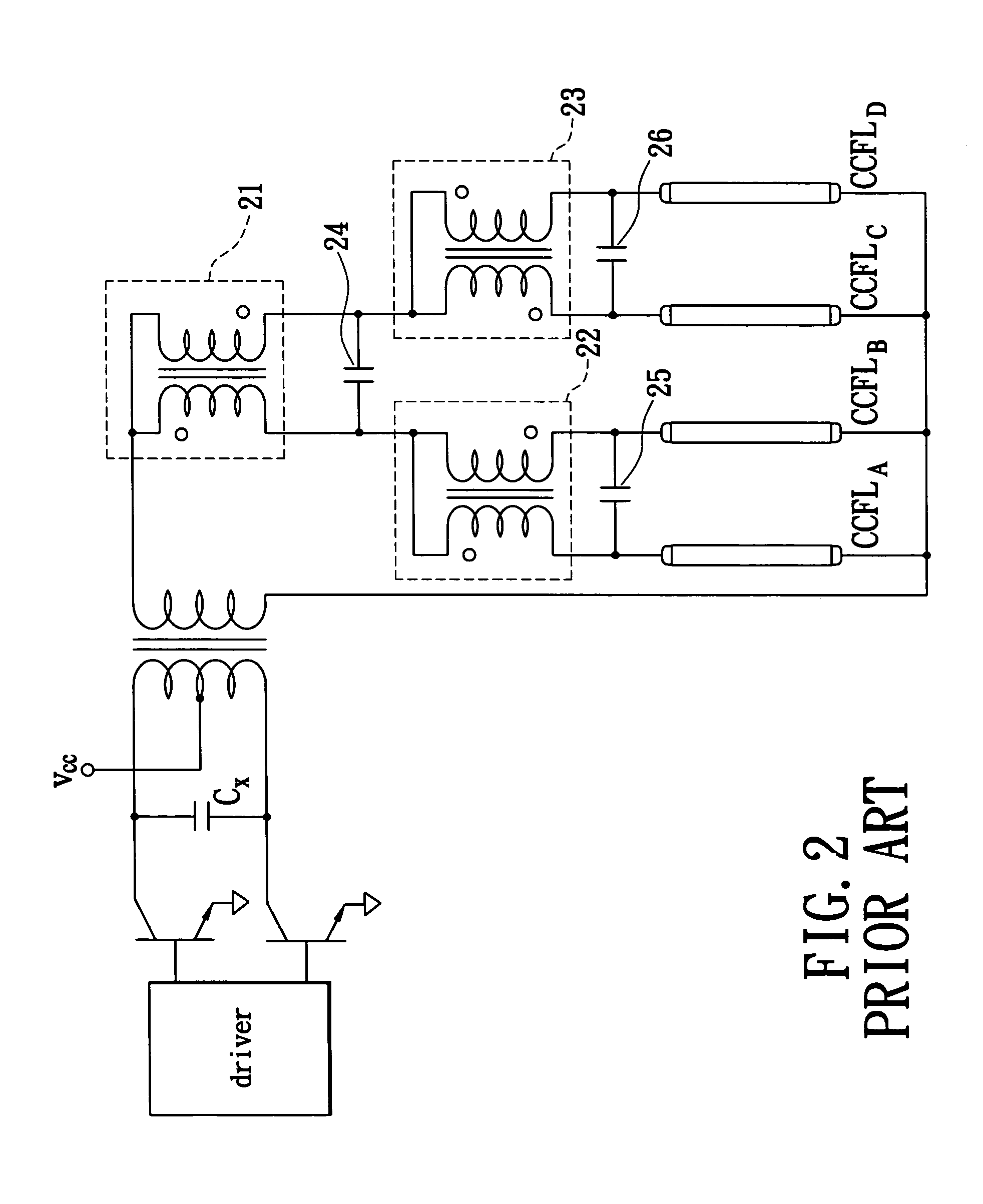Multiple-CCFL parallel driving circuit and the associated current balancing control method for liquid crystal display
a liquid crystal display and driving circuit technology, applied in the direction of electric variable regulation, process and machine control, instruments, etc., can solve the problems of affecting the performance of current balance, the impedance of storage energy components cannot be precisely controlled, and the single ccfl in the backlight module becomes less and less able to provide enough backlight, etc., to achieve the effect of improving the uniformity of the image of a large-siz
- Summary
- Abstract
- Description
- Claims
- Application Information
AI Technical Summary
Benefits of technology
Problems solved by technology
Method used
Image
Examples
first embodiment
[0032]Referring to FIG. 4, a multiple-CCFLs current balancing circuit with a basic current mirror structure 311 is shown. This is the multiple-CCFLs current balancing circuit. The connected points TC1, TC2, TC3, and TC4 to TCN are connected to a plurality of CCFLs. The multiple current balancing circuit with a basic current mirror structure 311 can be comprised of BJTs, JFETs or MOSFETs. It can achieve the result of the driving current balance of the multiple-CCFLs by the basic structure of the current mirror.
second embodiment
[0033]Referring to FIG. 5, a multiple CCFLs current balancing circuit with a current mirror structure for increasing output impedance of the current source 312 is shown. This is the multiple-CCFL current balancing circuit. The connected points TW1, TW2, TW3, and TW4 to TWN are connected to a plurality of CCFLs. This circuit connects the collector and the base of the BJT QW3 together. It increases the output impedance of the current source by a negative feedback method. Therefore, it can reduce the influence of any change in the impedance of the CCFLs which affects the multiple CCFLs current balancing circuit. The multiple current balancing circuit with a basic current mirror structure 312 can be comprised of BJTs, JFETs or MOSFETs.
third embodiment
[0034]Referring to FIG. 6, a multiple CCFLs current balancing circuit with a current mirror structure and proportional resistances 313 is shown. This is the multiple-CCFL current balancing circuit. The connected points TR1, TR2, TR3, and TR4 to TRN are connected to a plurality of CCFLs. The emitters of a plurality of BJT QR1, QR2, QR3, and QR4 to QRN are each connected to proportional resistances RR1, RR2, RR3, and RR4 to RRN. The multiple-CCFLs current balancing circuit can fine-tune the driving current of the CCFLs by adjusting the impedance values of the proportional resistances RR1, RR2, RR3, and RR4 to RRN. It can precisely adjust the driving currents of the multiple-CCFLs by altering the impedance values of the proportional resistances, thereby balancing the current. The multiple current balancing circuit with a current mirror structure and proportional resistances 313 can be comprised of BJTs, JFETs or MOSFETs.
[0035]Referring to FIG. 7, a system diagram of the backlight syste...
PUM
 Login to View More
Login to View More Abstract
Description
Claims
Application Information
 Login to View More
Login to View More - R&D
- Intellectual Property
- Life Sciences
- Materials
- Tech Scout
- Unparalleled Data Quality
- Higher Quality Content
- 60% Fewer Hallucinations
Browse by: Latest US Patents, China's latest patents, Technical Efficacy Thesaurus, Application Domain, Technology Topic, Popular Technical Reports.
© 2025 PatSnap. All rights reserved.Legal|Privacy policy|Modern Slavery Act Transparency Statement|Sitemap|About US| Contact US: help@patsnap.com



